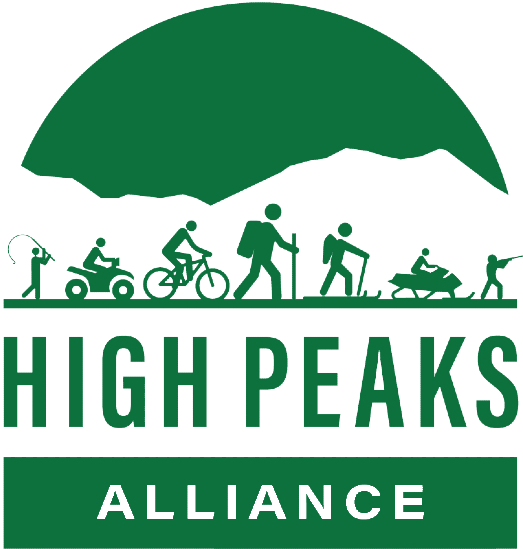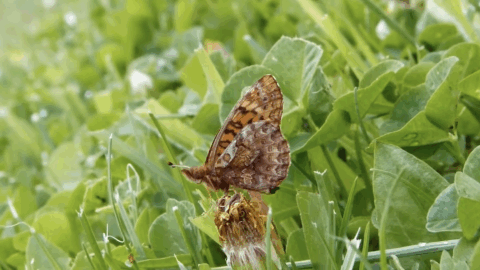Connecting with Nature & Community
Today, we’re joined by Kathy Houston, a dedicated board member of the High Peaks Alliance. Kathy shares her deep connection to the area, saying,
“I have lived in the High Peaks region for most of my adult life. I came here for the beauty and that’s why I stayed. I have spent nearly 40 years of my time here, working with children. Some of my best moments with kids and peers have been outside.”
Join us as we explore Kathy’s journey, her commitment to preserving the natural beauty of the High Peaks, and the experiences that have shaped her love for this special place.
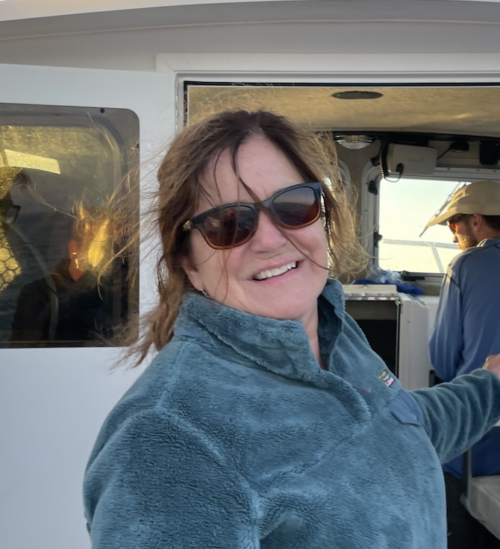
In your view, what’s the biggest opportunity for the Alliance to make a lasting difference?
I think a great opportunity for us is in reviving the spirit of being in nature and helping people understand the power of being outside and what it can do for our brains, our bodies, and our spirits. The importance of conserving properties so people can be outside in whatever way they enjoy it most, can’t be understated. We have the opportunity to improve people’s lives!
So, what’s happening in the region that’s influencing the Alliance’s priorities right now?
My concern is for kids. There is a move away from understanding the value of being outside. I think it’s more than regionally. It’s national. Statistically, kids are spending considerably less time outside than when I was young. They are spending more time inside, on screens. In this area, we have lots of outdoor opportunities, but still, our kids do not get outside like kids did 30 years ago. Adults aren’t using the outdoors as much either. They are missing out on the many physical, psychological, and intellectual benefits of being in nature. This trend away from being outside magnifies the importance of HPA. If we can ensure access and secure a diverse set of outdoor opportunities for kids they may spend more time outside and be happier and healthier.
Will you share a community engagement success story? The one I’m really proud of is Shiloh Pond in Kingfield. Shiloh Pond is a hidden gem of a wilderness pond with hiking trails, a waterfall, and brook trout fishing. This community-owned property is just a mile outside of town, yet has a true wilderness feel. The Shiloh Pond committee includes a diverse group of community members with different histories and connections to the area and differing recreational interests yet we work extremely well together to protect a property that is greatly valued by the community.
Evolving Perspectives
How has your understanding of conservation and community shifted since joining the board?
Other than snowmobiling to get to camp up north, I was essentially a non-motorized trail user before joining the board. Working with my fellow board members and gaining an understanding of the role of recreational opportunities in conservation, I learned to value the need for conservation for motorized users as well.
A marriage of motorized and non-motorized users can be very strong and respectful. I’m not speaking of shared trails because there are places where sharing trails simply doesn’t work. There are, however, shared-use spaces that can benefit all users. Motorized and non-motorized users working together is just another opportunity to expand our understanding of one another and to support people with different recreational interests.
For years I took public access to wilderness for granted. I could hop on my bike, or throw on a pair of hiking boots and head outside most anyplace I wanted. Access was readily available. In the 40 years I have lived here much of that access has changed, or become unavailable. I quickly stopped taking access for granted. I didn’t realize how little public lands there were in Maine compared to the rest of the country, and I didn’t realize how vital land trusts were to providing public access to so much natural space. Ensuring access for future generations is a great responsibility and makes our work so very necessary.
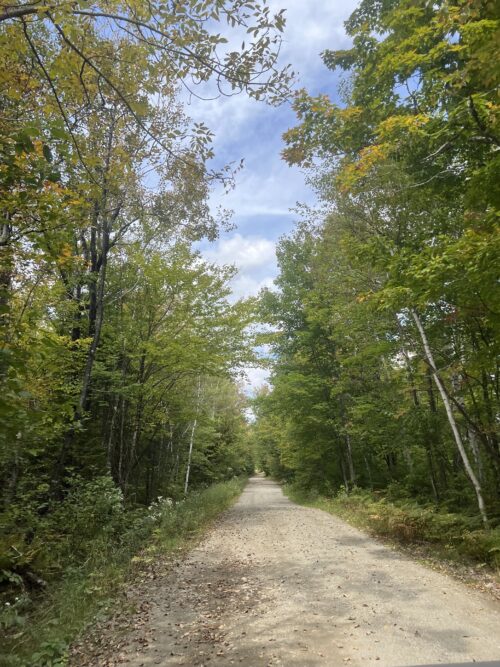
Guiding Principles
If someone was thinking about joining a nonprofit board, what advice would you give them?
I would advise them to be sure to have a clear understanding of the board’s purpose and have clear goals of what, and how they see themselves contributing to the board. They should also research the organization’s mission and values and make sure their personal interest and values align. In conservation as in much of life, it’s about the values.
How do you approach mentoring the next generation of conservation leaders?
I think a large part of mentoring is modeling and helping them find inroads. They may care about conservation but don’t know where they fit in. A mentor should provide concrete ways to get involved. Helping the next generation understand the importance of their involvement is crucial.
We have to help them understand that they do have a lot of skills to bring to a conservation community. I think sometimes the younger generation, at least I know I did, may look up to the older generation and you think, oh, I can’t do that. Now that I’m the older generation, I know they can.
You’re the chair of the Shiloh Pond Community Forest committee and so you have experience overseeing a property that has various users. How do you guys go about balancing those users?
In the beginning, we spent a considerable amount of time, clarifying our mission and developing a set of guiding principles. I think this was vitally important because every one of our decisions is based on our mission and guiding principles. If we ever have a difficult decision about use, the committee always asks itself, “Does it fit with our mission? Does it fit with our guiding principles? Great discussion usually ensues followed by a thoughtful decision.
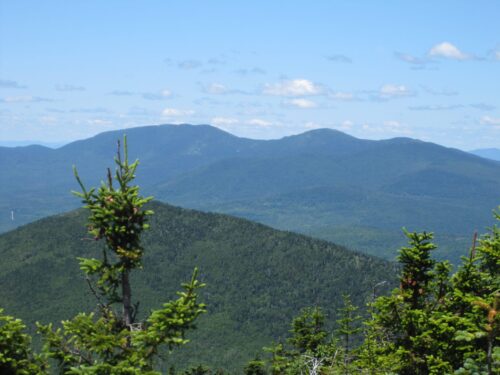
A Dream Fulfilled
What kind of legacy do you hope your time on the board will leave for the High Peaks region?
I hope my time on the board will help people experience the transformative power of nature.
Will you share a personal story or an experience you had in the High Peaks?
We moved to the High Peaks area because my husband had a college friend who lived here and a family friend who had a place we could buy. It was a small A-frame in Carrabassett Valley with no running water. We were thrilled! Every morning before work I would walk down what is now the Narrow Gauge trail and soak in the colors, the light, and the beauty around me. Whenever I went to Kingfield I would drive out Route 142 to let my spirit absorb the open fields and vast mountains. Kingfield Elementary School had just been built and sat warmly in my view. I remember thinking, I would love to have kids someday and have my kids go to a school like that where they could look out the window and see mountains. I ended up teaching at that school for nearly 30 years and both of my children received an outstanding education in MSAD 58 and developed a deep love of the mountains and nature. My dream came true.
